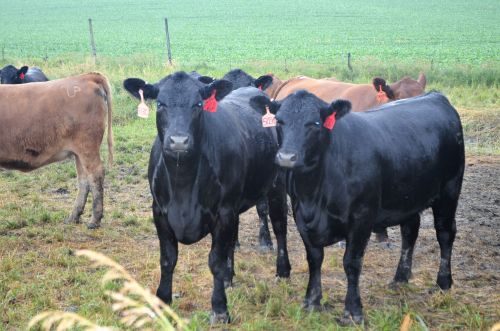The Cool Side of Managing Heat, Diet and Transport Stress at Breeding Season
Posted: April 28, 2017 | Written By: Daniel Kohls, P.A.S. - Form-A-Feed Nutrition and Production Specialist

The primary area of heat stress impacts on the beef industry has been focused largely on feedlot performance. However, during the course of our field research on Hydro-Lac® for mitigating the effects of heat stress, some astute producers have tied some common sense-logic together with some of the most relevant and latest reproductive science to improve embryo transfer (ET) and artificial insemination (AI) results on their operations.
One area that producers and scientists alike have looked to most recently is improving fertilization rate and improving embryo survival rate. Recent research in early embryonic death has been linked to heat stress, transport stress, body condition loss and dietary shifts near or shortly after the time of breeding¹. Several, if not all of these potential stressor conditions, can exist in the scenario of beef cows and heifers being synchronized for timed AI programs. Multiple processing chute trips, transporting to summer pastures with increased exposure to heat and solar radiation, the change in feed from hay-based rations to lush grass, and the potential to lose body weight briefly following this change all can negatively impact AI or ET success in the first 30 days or so post-breeding. Therefore, managing and mitigating these stressors can have huge economic benefits to beef cow-calf producers.
The impact of body condition gain or loss may seem simple enough, but plane of nutrition at time of breeding can have a significant impact on embryo quality and survival². This is possibly due to energy reserves available to the growing embryo at a tissue level in utero. Cattlemen can apply the common-sense approaches of managing for low stress animal handling in combination with a diet transition plan that ensures a positive energy balance for females going out to pastures post-breeding to improve embryo survival.
Managing the breeding season diet is also where the proven practice of feeding Hydro-Lac® prior to and during stress events, such as heat or transport stress, has potential to be a valuable tool to improve first-service conception rates when fed in concert with beef synchronization programs. Our repeated research trials show improved tissue energy reserves from feeding Hydro-Lac®³. Producers have repeatedly shared that Hydro-Lac® provides a practical application of the product for the purposes of strategically improving energy status prior to and during the breeding season, which can positively impact overall pregnancy rates. It’s simple, effective and holds great potential for improving return on the investment in high value genetics through AI or ET.
If you’d like more information about managing for greater reproductive success by managing diet, transportation and heat stress, contact your Form-A-Feed representative today.
¹Bridges, et. al., Nutritional Challenges for Embryo Survival in Cattle, MN Nutrition Conf 2014
²Kruse, et.al. 2013
³Kern, et. al. 2011,2013 & Hoffman, et. al. 2013